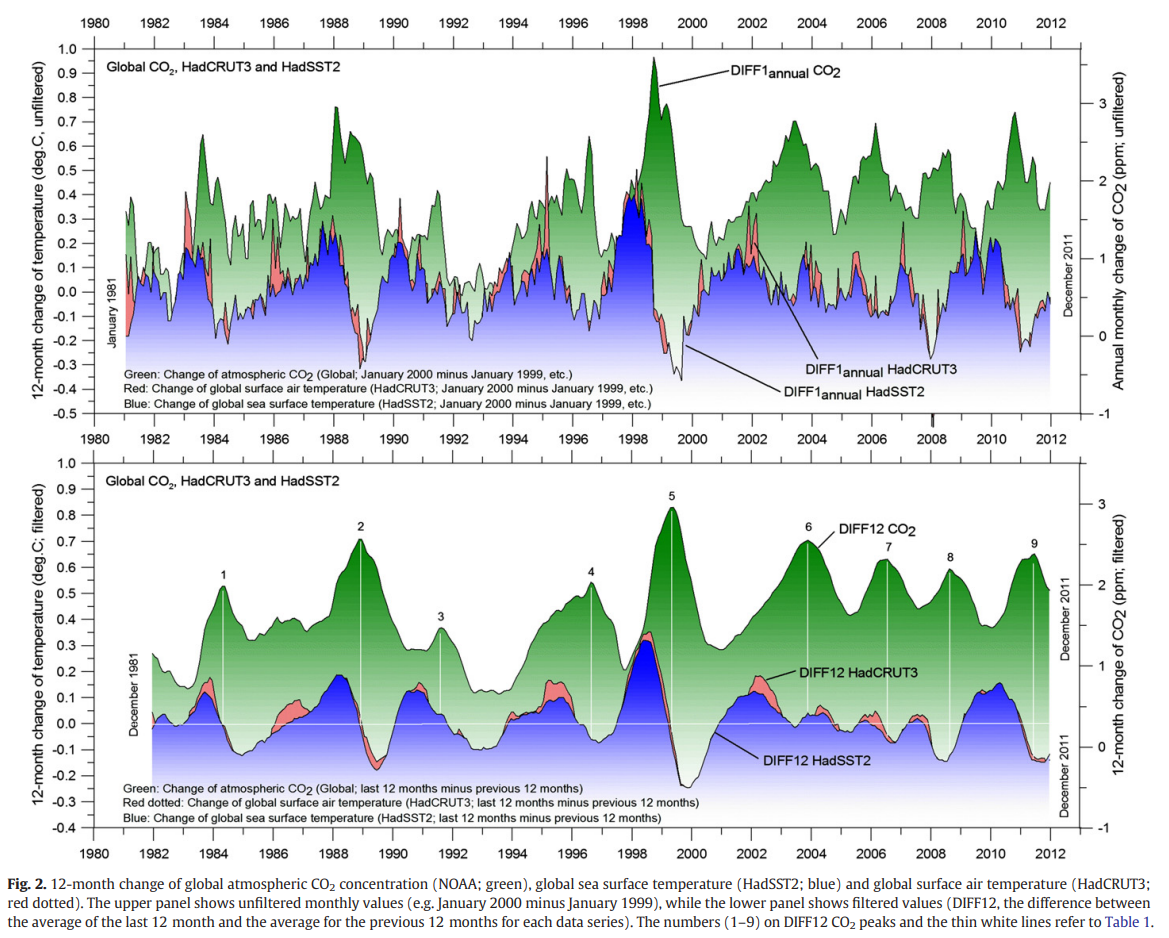Ole Humlum on CO2 Lagging Temperature

Ole Humlum published a paper about 10 years ago attempting to show that CO2 always lags temperature and therefore the increase in CO2 substantially comes from an increase in temperature, not the other way around. In the words of Humlum's paper, As cause always must precede effect, this observation demonstrates that modern changes in temperatures are generally not induced by changes in atmospheric CO2. Indeed, the sequence of events is seen to be the opposite: temperature changes are taking place before the corresponding CO2 changes occur. and CO2 released from anthropogene [sic] sources apparently has little influence on the observed changes in atmospheric CO2, and changes in atmospheric CO2 are not tracking changes in human emissions. What I want to show two things here. First, Humlum's argument is fatally flawed logically, and he has to hide that flaw with by detrending the data. Second, even if we were take his claims, it leads to absurd conclusions. Humlum's Fatal Log...
.png)